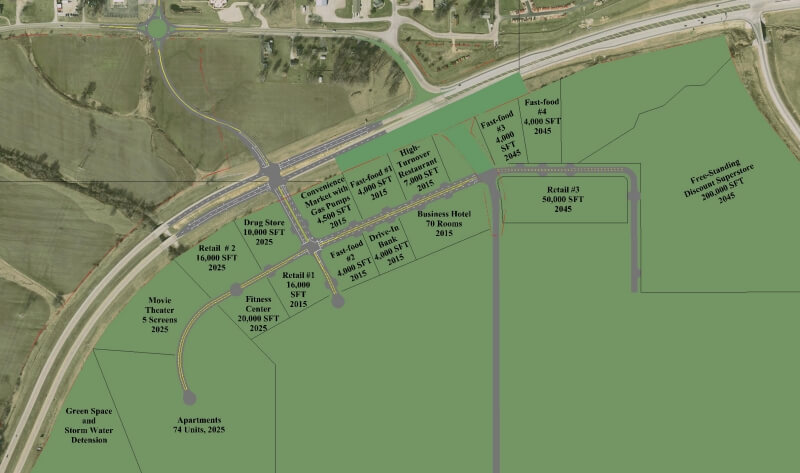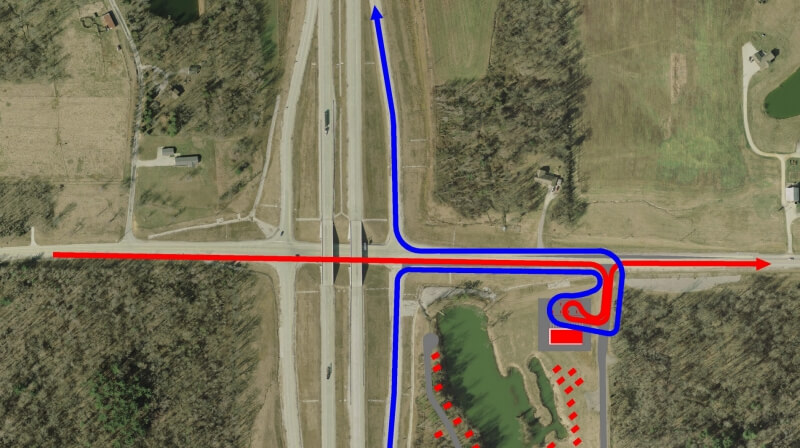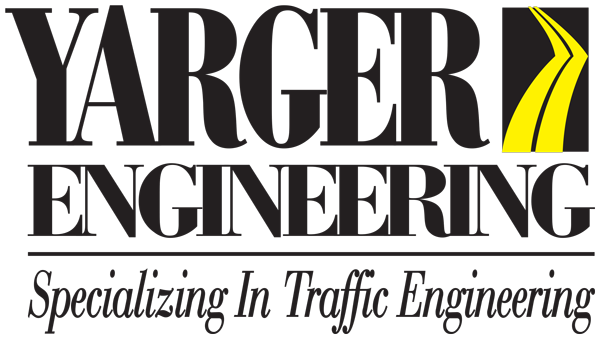Trip Generation - Yarger Engineering, Inc. 317-475-1100 Email Us
What is Trip Generation?
One of the first steps in a traffic impact study is trip generation where traffic to and from the proposed development, or a nearby off-site development, is forecasted. Normally it will be based on the land use type and development size, number of employees, or dwelling units depending on the land use type. The primary source of the trip generation information comes from the Institute of Transportation Engineers Trip Generation Manual. It contains instructions and about 2,000 pages of data from small studies at various developments to establish equations that associate an independent variable with the trips counted at the site. The independent variable should be the cause of the variation in trips from a site and easily measured or forecasted, like the number of homes in a subdivision. Many of the land uses have more than one independent variable to choose from, such as office where the square foot or the number of employees can be used. Trips can be estimated on a daily or hourly basis for the street peak and generator peaks and are one-way. A round trip is counted as two one-way trips. Of course, there are separate equations for weekdays, Saturdays and Sundays. The street peak is when the traffic on the adjacent street is highest, typically between 7:00 AM and 9:00 AM and 4:00 and 6:00 PM. The generator peak may or may not occur at the same time. For example, fast-food restaurants peak around lunch time.

Once the total number of trips in and out of a development is forecasted for a particular time, the next step is estimate the number of internal trips if there is more than one land use that can be accessed without going back on to the street system. This is very typical in mixed use developments that may have retail, office and residential uses. Internal trips can be tricky to estimate, but generally reduce the impact of the development on the public roads when a motorist can visit a restaurant, bank, grocery store and dry cleaner without going back on the public roads. They can park and walk or drive between the land uses as long as they don’t use public roads to do so. The ITE Handbook has a method that can be used to estimate internal trips, and it can be supplemented with data from NCHRP Report 684. In some studies that include the site’s internal road network, it may be necessary to assign the internal trips rather than just subtracting them from the external trips.
After reducing the total trips by the number of internal trips, the next step is to divide the remaining trips into primary, pass-by and diverted link trips.
Primary trips are those where the motorist only goal in getting the vehicle was to come to the development and then return to where they came from. These are estimated by forecasting the pass-by trips and the diverted link trips, and then subtracting them from the total trip minus the internal trips.

Pass-by trips are those trips already on the roadways immediately adjacent to the site, but altering their path at the driveway to visit the site. Pass-by trips differ from diverted link trips in that the diverted link trips would be on nearby streets whereas pass-by trips would be on the adjacent streets with driveways. Pass-by trips require a development driveway on the street where the motorist would have been driving on anyway. See the red line above.
Diverted link trips are those that would have been on the roadway network anyway, but alter their path to visit the site. For example, for a gas station at an interchange, diverted link trips are those that would come off the freeway and then go back to the freeway in their initial direction. See the blue line above. They are not pass-by trips since the site doesn’t have a driveway to freeway.
Occasionally mass transit, walking, biking or even horse and buggies can come into the mix as well, but for most traffic impact studies in Indiana and Kentucky, the assumption is that the data in the ITE Trip Generation Manual reflects the same conditions as the proposed development. In some cases, the trips need to be assigned to the road network before determining the mass transit percentages since they may vary by location due to the availability of mass transit. Distance also needs to be considered for walking and biking.
 Trips then need to be distributed and assigned to the driveways surrounding road network. Sometimes marketing studies can provide information as to where potential customers may come from. Other times the local governmental agencies may have a travel demand model that will have that information. Similar business in the area may also be willing to share some of their data. While unlikely for competing businesses, we have found that employers within an industrial park may be willing to share where their employees live which can provide a good basis for estimating where similar future employees may live. This helps the existing employers by providing improvements where they really will be needed. For example, a turn lane may be installed that wouldn’t have been expected using less reliable methods. When these are not available, then the gravity model is used to estimate where potential customers, employees or other may be coming from and returning to. The gravity model proportions the trips to different starting or ending locations based on the inverse of the travel time squared. Census tract or zip code based information is used in these estimates. Once the starting and ending locations are known by the number of trips to each, then they trips are assigned to the road network with turns or through movements at the various intersections. There are software packages that can do this, but Yarger Engineering, Inc. uses a combination of spreadsheets to avoid the “black box” results that can come from a travel demand model and to be able to do detailed modifications when necessary. The result is a forecast that is entirely traceable mathematically from start to finish while allowing quick updates should the development assumptions change, such as the size of the office building increasing.
Trips then need to be distributed and assigned to the driveways surrounding road network. Sometimes marketing studies can provide information as to where potential customers may come from. Other times the local governmental agencies may have a travel demand model that will have that information. Similar business in the area may also be willing to share some of their data. While unlikely for competing businesses, we have found that employers within an industrial park may be willing to share where their employees live which can provide a good basis for estimating where similar future employees may live. This helps the existing employers by providing improvements where they really will be needed. For example, a turn lane may be installed that wouldn’t have been expected using less reliable methods. When these are not available, then the gravity model is used to estimate where potential customers, employees or other may be coming from and returning to. The gravity model proportions the trips to different starting or ending locations based on the inverse of the travel time squared. Census tract or zip code based information is used in these estimates. Once the starting and ending locations are known by the number of trips to each, then they trips are assigned to the road network with turns or through movements at the various intersections. There are software packages that can do this, but Yarger Engineering, Inc. uses a combination of spreadsheets to avoid the “black box” results that can come from a travel demand model and to be able to do detailed modifications when necessary. The result is a forecast that is entirely traceable mathematically from start to finish while allowing quick updates should the development assumptions change, such as the size of the office building increasing.
Yarger Engineering offers free initial consultations, and we would be glad to discuss your situation. Call us at 317-475-1100 or email us!
